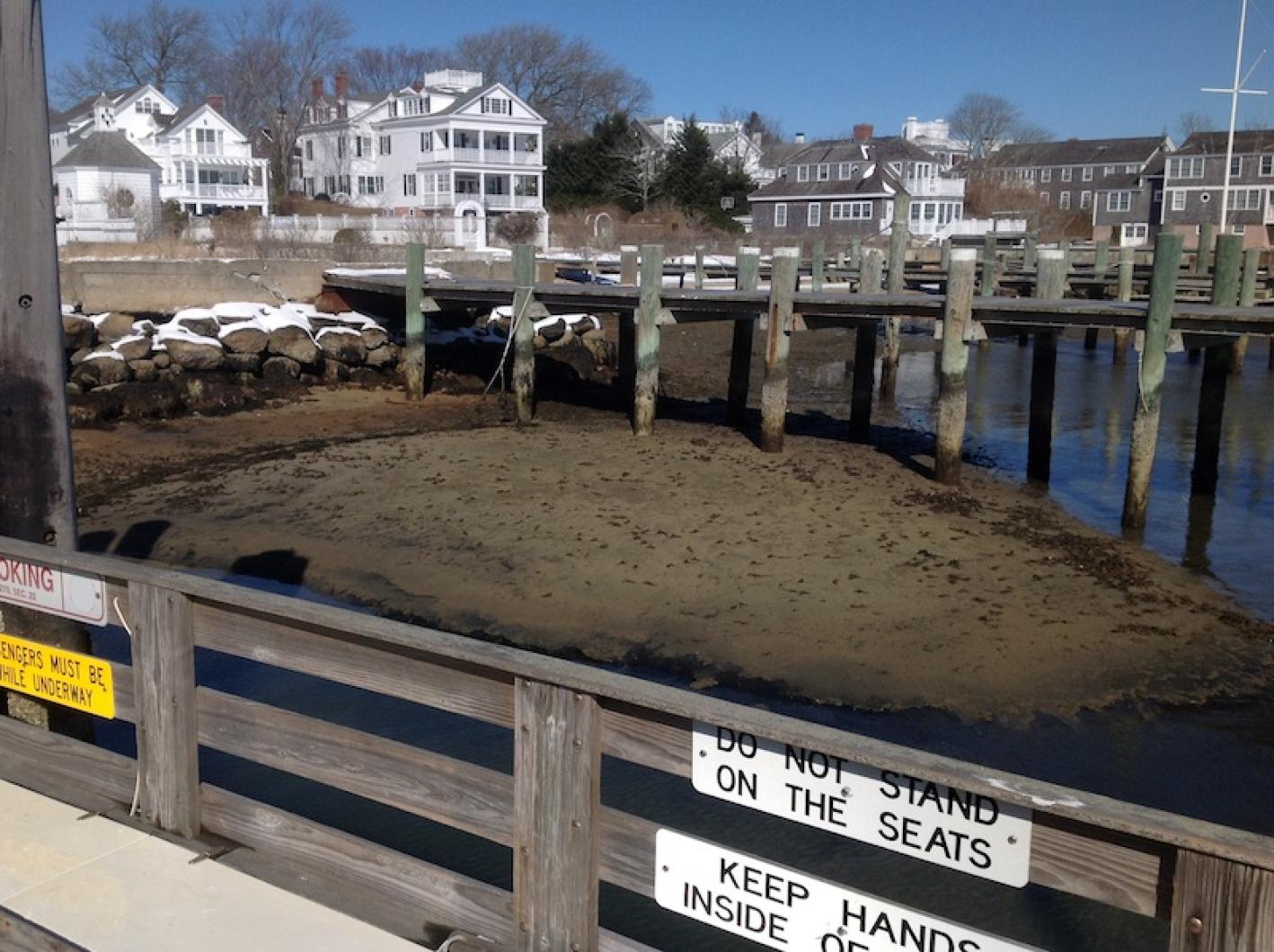Blame it on the moon, an asteroid that swooped close to Earth on Friday or an approaching tsunami, but unusually low tides seen across the Vineyard this weekend actually have a simpler explanation than some expected and feared.
Nearly-historic low tides on Sunday and Monday left sandbars and shellfish flats in areas all around the Island exposed. The outer Vineyard Haven harbor by the sea wall was dry all the way to the channel into Lagoon Pond, said one observer. At Major’s Cove the water level was so low that you could see the bottom of Sengekontacket Pond, said another. For the first time in recent memory, dry ground was visible around the former Daggett House pier next to Memorial Wharf. One could have feasibly walked from the pier over sand and touched the bulkhead in the Edgartown slip of the Chappy ferry, said a close watcher. The water there is normally sternum-height.
Even the Norton Point beach opening was temporarily closed.
The spectacle confounded almost all who encountered it.
“It was the lowest tide I’ve ever seen. We saw more mud exposed than we’ve ever seen before,” said Suzan Bellincampi, director of Felix Neck Wildlife Sanctuary, who noticed the low tide at Sengekontacket but was at a loss for an explanation.
Lagoon Pond resident Frank Brunelle was also stumped; in his 15 years living on the pond, he had never seen the water level dip so low.
Most observers surmised that the phenomenon wasn’t the result of astronomical tide, as the moon was in its first quarter on Feb. 17. At that phase of the lunar cycle, the tide’s range is typically at its minimum.
But without an obvious explanation, some began to worry that the drop in water levels could have been caused by the recent asteroid passing, or even an approaching tsunami.
No need to be concerned, said Bill Simpson, a meteorologist for the National Weather Service at Taunton. Three days of a strong, steady northwest winds simply blew water away from the coastlines.
The phenomenon wasn’t particular to Martha’s Vineyard. “It was a regional event . . . It was noticed in New London, Newport, any of those South-facing shore [along the Southeastern New England coast],” said Stephen Gill, a senior scientist with the NOAA National Ocean Service, Center for Operational Oceanographic Products and Services. Woods Hole, Montauk, Providence and Nantucket also were affected by the low tides.
“Yesterday and this morning they were running two feet below the predicted tide,” said Mr. Gill.
A low pressure system intensified offshore and created a very strong pressure gradient, he said. “The orientation of the strong north-northwest sustained winds blew the water offshore.”







Comments (2)
Comments
Comment policy »